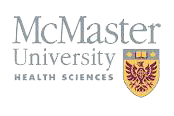Dr. Kien (Ken) Trinh, Associate Clinical Professor, Michael G. DeGroote of Medicine, McMaster University
Proper blinding of patients and evaluators to group assignment is possible in clinical trials of acupuncture and many different invasive and non-invasive procedures have been designed for this purpose.
Abstract
Objective:
To study the various methods and levels of blinding in acupuncture research.
Data Sources:
Reference lists of the most recent systematic review of acupuncture on pain, systematic search of MEDLINE from 1966 to August 2000, CINAHL from 1982 to August 2000, and HealthSTAR from 1975 to August 2000.
Study Selection:
Randomized studies were included if they evaluated the effectiveness of acupuncture in painful conditions using a blinded design.
Data Extraction:
The hard copy of each of the eligible studies available was reviewed. The following information was extracted: name of first author, publication year, study design, blinding testing, treatment sham group received, and the outcome measures.
Data Synthesis:
There were 19 studies identified. They were described as “double blinded” by the authors, referring to blinding of patients and evaluators. Sixteen studies did not perform any blinding testing after the treatments were over. Only 3 studies provided information that the blinding of patients was successful. These 3 studies used different questionnaires to assess the success of blinding. There was no study that evaluated the success of blinding of treatment evaluators. Also, no study attempted blinding of the treating acupuncturists.
Conclusions:
Proper blinding of patients and evaluators is possible in acupuncture research and many different techniques of proper blinding exist. Assessment of blinding is a critical aspect of any sham or placebo controlled trial and should be routinely incorporated into the design of such trials of acupuncture
For a full copy of the article, please contact:
Dr. Kien (Ken) Vinh Trinh, MD, MSc
Assistant Clinical Professor, McMaster University, Faculty of Health Sciences
Programme Chair, Medical Acupuncture,
McMaster University Health Sciences Continuing Education
Director, Ancaster Sports Medicine CentreAncaster Sports Medicine & Rehabilitation Centre
1015 Golf Links Road
Ancaster, Ontario, Canada L9G 4S4
Telephone: 1 (905) 648-4425
Fax: 1 (905) 648-4426
Email: trinhk@mcmaster.ca
